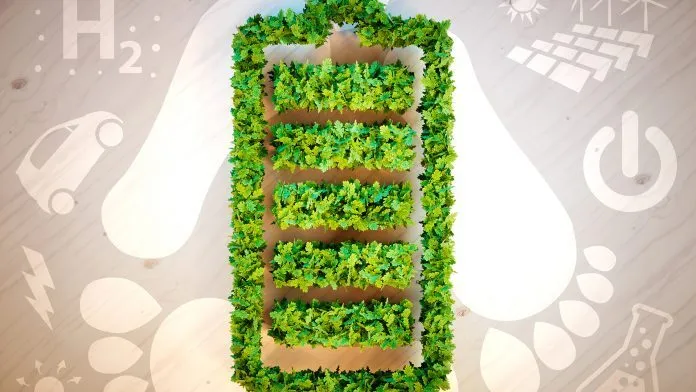Nanomaterials Boost Performance of Environmentally Friendly Batteries

Metal-carbon-dioxide batteries are environmentally friendly and have great potential for widespread use, however, they are hindered by their limited energy efficiency, the Innovationnewsnetwork reported.
To try and overcome this weakness, a research team, co-led by chemists from the City University of Hong Kong (CityU), used an unconventional phase nanomaterial as a catalyst. This boosted the energy efficiency of the batteries by up to 83.8%. The new catalyst designed for these environmentally friendly batteries will help contribute to carbon-neutral goals around the globe.
The study, titled ‘Boosting the reaction kinetics in aprotic lithium-carbon-dioxide batteries with unconventional phase metal nanomaterials,’ was recently published in the journal The Proceedings of the National Academy of Sciences.
Metal-carbon-dioxide batteries have the ability to provide a high energy density for electronics and can convert CO2 greenhouse gas emissions into value-added products. The lithium-carbon-dioxide battery, in particular, has a high theoretical energy density, and has the potential to be a contender for next-generation high-performance energy conversion and storage technology.
However, there is a drawback to these environmentally friendly batteries. Metal-carbon-dioxide batteries have a slow reaction to kinetics, causing large over-potential, low energy efficiency, poor reversibility, and limited cycling stability.
Dr. Fan Zhanxi, Assistant Professor in the Department of Chemistry at CityU, and one of the leaders of the study, stated, “Researchers commonly consider morphology, size, constituents, and distribution of metal-based components in composite cathode catalysts to be the main concerns that lead to differences in battery performance.
“But we found preparing novel catalysts with unconventional phases to be a feasible and promising strategy to boost the energy efficiency and performance of metal-gas batteries, especially since traditional modification strategies for catalysts have encountered long-term technical hurdles.”
The team’s extensive knowledge of the regulation of the crystal phase of metal-based nanomaterials allowed them to select suitable elements to construct their unconventional phases. From this, they were able to study the effect of the crystal phase of catalysts on the reaction kinetics of a certain kind of aprotic metal-gas electrochemistry.
“However, this does not mean that this process is easy to realise, because it involves strict requirements on the bifunctionality of cathode catalysts in an organic environment," Dr. Fan explained.
Dr. Fan and his team fused iridium nanostructures with an unconventional 4H/face-centred cubic heterophase by regulating the growth kinetics of iridium on gold templates. The results from the study showed that the catalyst with 4H/fcc heterophase had a lower charge plateau and higher energy efficiency during cycling in the environmentally friendly, aprotic Li-CO2 batteries, compared to other metal-based catalysts.
The team conducted a combination of experiments and theoretical calculations which revealed that 4H/fcc Ir nanostructures, created through phase engineering, lower the overpotential of the environmentally friendly batteries and promote the cycling stability of electrochemical redox reactions. This is because the created nanostructures are more favourable for the reversible formation of amorphous/low-crystalline discharge products.
The new nanostructures had a better performance than traditional catalysts used in battery technology, and were able to achieve outstanding charge potential and energy efficiency compared to other reported metal-based catalysts used in aprotic Li-CO2 batteries.
“This study reveals the great potential of phase engineering of catalysts in metal-gas electrochemistry. It opens up a new direction to design catalysts for developing sustainable electrochemical energy conversion and storage systems," Dr. Fan concluded.
4155/v





















